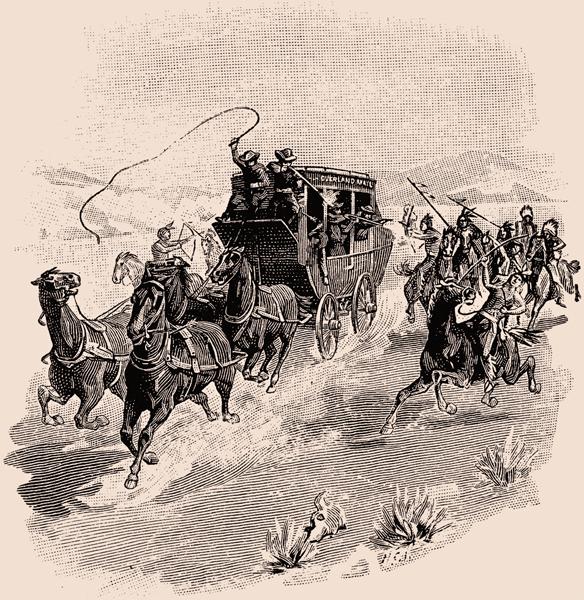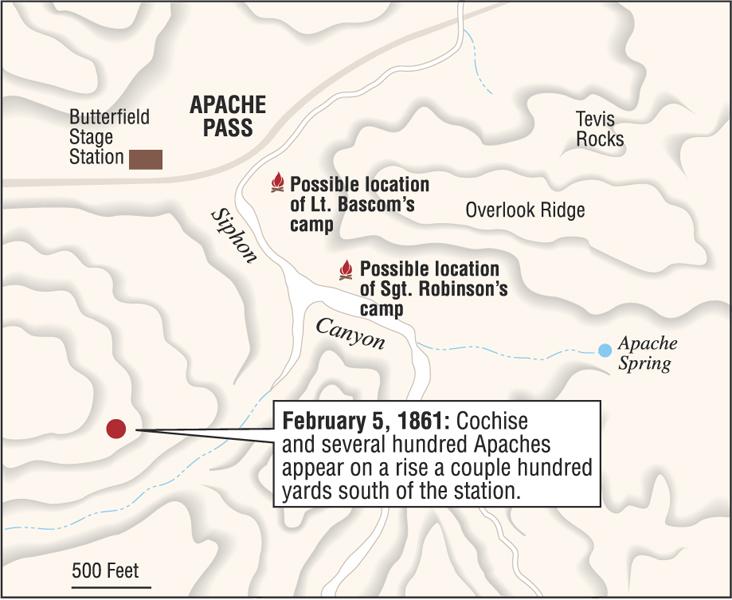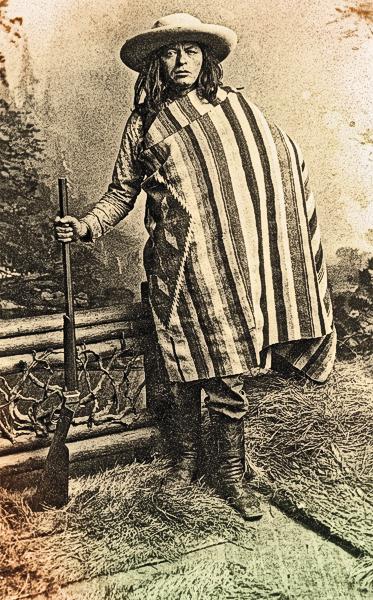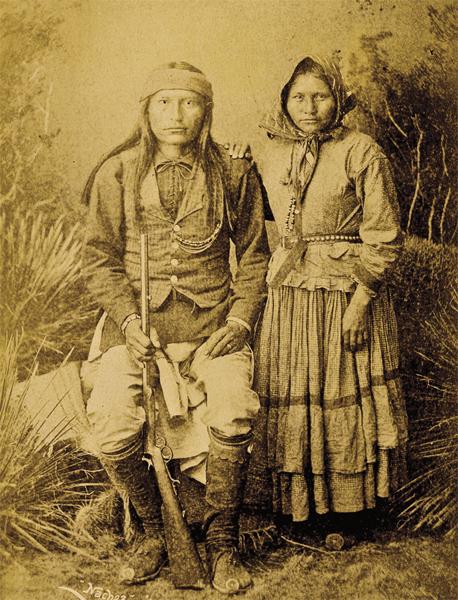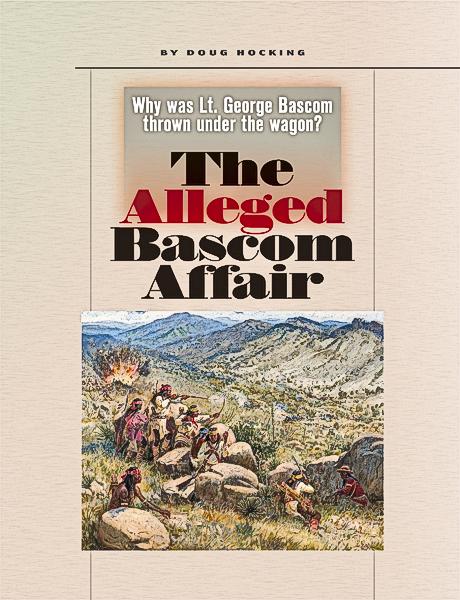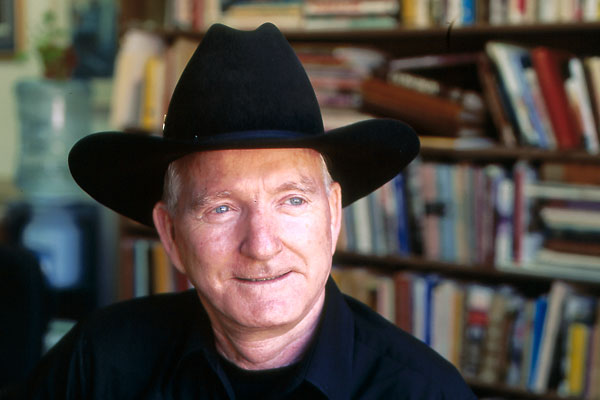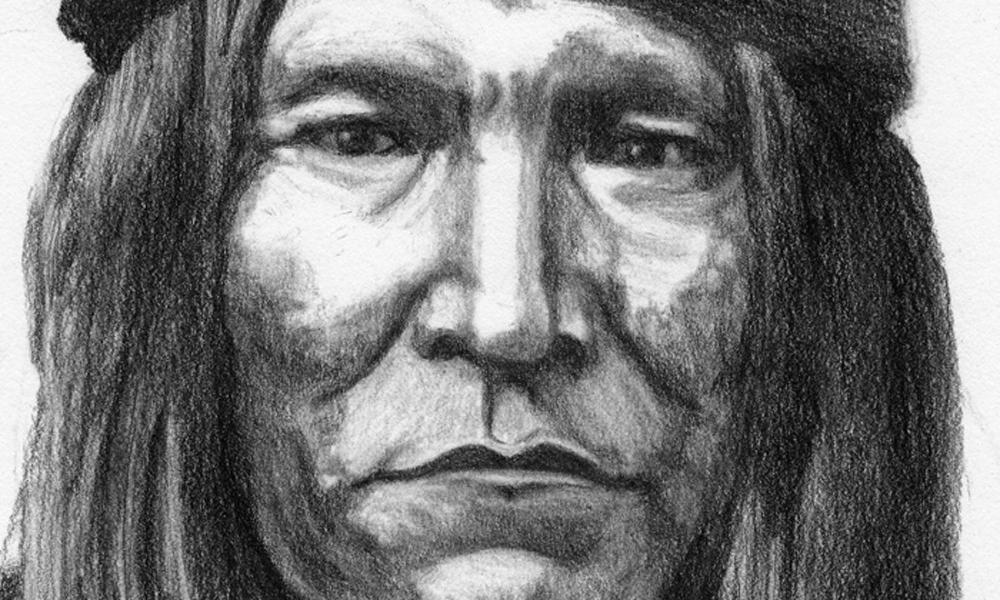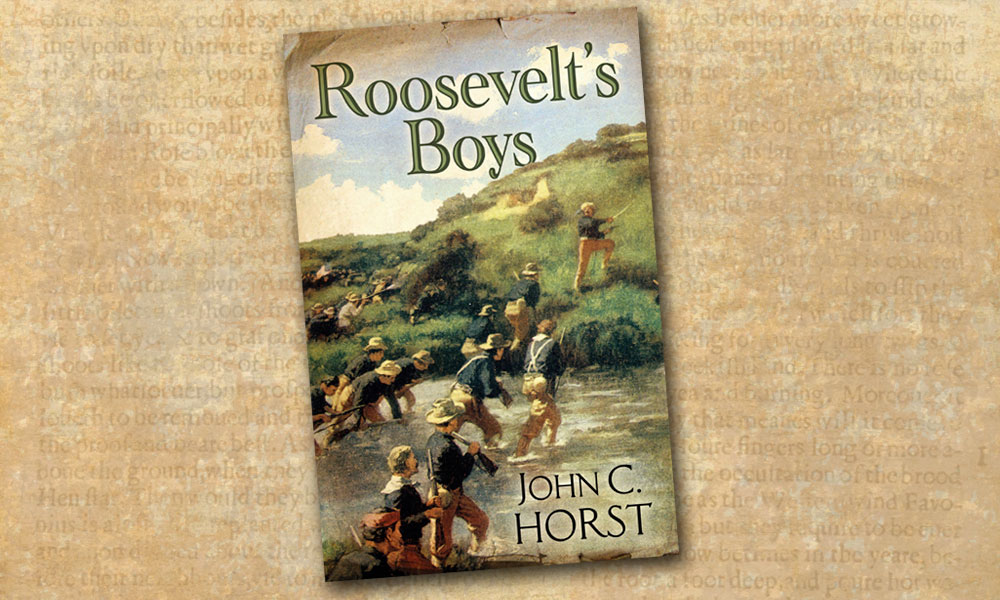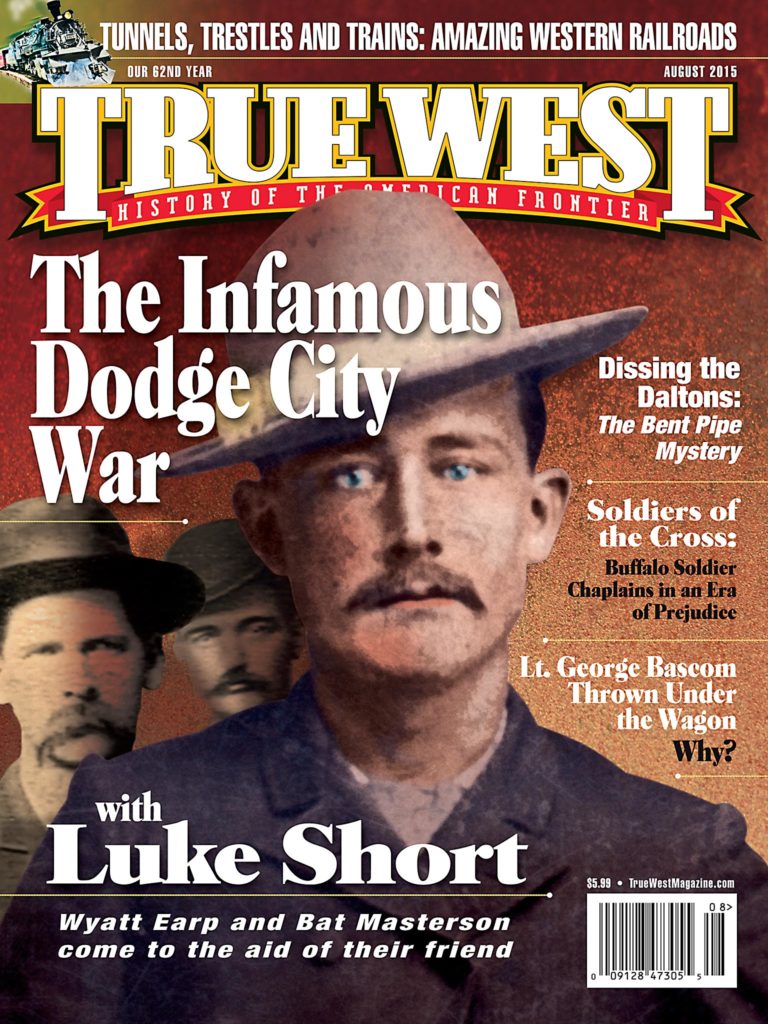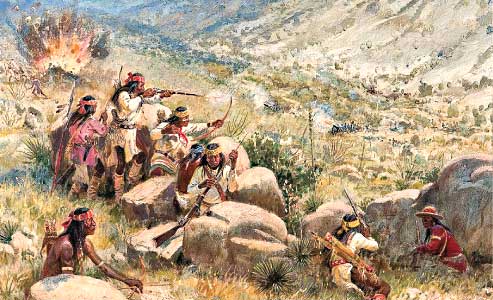 The legend of the Bascom Affair casts Lt. George Bascom in the worst possible, unfair light, blaming him for starting 11 years of bloody warfare. Although historians now have a better understanding of the true story, the legend persists because it has the power of being the first way folks have heard the story.
The legend of the Bascom Affair casts Lt. George Bascom in the worst possible, unfair light, blaming him for starting 11 years of bloody warfare. Although historians now have a better understanding of the true story, the legend persists because it has the power of being the first way folks have heard the story.
The legend says that in February 1861, while on patrol near the Whetstone Mountains, Lt. Bascom accused Chiricahua Apache Chief Cochise and his Apache band of kidnapping 12-year-old Felix Ward, who had been taken from his stepfather Johnny’s ranch near modern-day Patagonia, Arizona, in October 1860. Cochise escaped the troops and took hostages.
A wise sergeant told Bascom to make an exchange of Apache captives for these hostages, but the lieutenant refused, ordering the sergeant court-martialed. Bascom then, according to Apache sources, hanged his hostages. Cochise responded by killing his. The war was on.
The Wise Sergeant
Who was this wise sergeant? Reuben F. Bernard, the commander of Arizona’s Fort Bowie, who, in 1869, was caught in a war that he blamed on Bascom. He said of Cochise, “This Indian was at peace until betrayed and wounded by white men.”
Bernard’s tale of what had happened in 1861 was further embellished when Arizona Gov. A.P.K. Safford’s conversation with Cochise was reported by the Arizona Citizen on December 7, 1872: “I told him that the conduct of Lieutenant Bascom was disliked by our people, and if he had not gone to war, Bascom would have been punished and many lives would have been saved.”
Sidney DeLong, a sutler at Fort Bowie when Bernard commanded the post, wrote an early history of Arizona in 1905 and included Bernard’s version of the story. Every verifiable fact is wrong; the only part DeLong got right was that Bascom and Cochise had met in Bascom’s tent.
Then the author of the first major work on Arizona history, Thomas Edwin Farish, picked up the ball. He reported the start of the Cochise War as 1861 and placed the blame on Bascom.
Where was Bascom when these devastating portrayals of him and his actions came out? He had been killed at Valverde, in 1862, during the Civil War. He was not alive to defend his reputation.
The Truth Comes Out
Starting about 1960, scholars Robert Utley, Benjamin H. Sacks and Constance Wynn Altshuler began locating primary documentation, namely the reports of men who had actually been at Apache Pass with Lt. Bascom in 1861. They painted a different picture of the so-called Bascom Affair.
Bernard had claimed he advised Lt. Bascom to exchange their hostages for Cochise’s, only to be ignored and court-martialed. Yet no contemporaneous record of this incident has emerged. The historians concluded Bernard could not have offered this advice because, quite simply, he was not with Bascom’s command at Apache Pass.
Bernard was in the wrong unit. Bascom was 7th Infantry, and Bernard was 1st Dragoons. He did not show up as an attachment to Bascom’s company. No one else remembered him being there, and he misstated key elements, like the subsequent presence of his own commanding officer, Lt. Isaiah Moore. The record showed that Bernard was probably on leave in Tennessee when Bascom confronted Cochise. Sacks concluded that even if Bernard had been present, he wouldn’t have arrived until Lt. Moore did, on February 14, eight days after Bascom had refused to accept Cochise’s trade of 16 U.S. Army mules and hostage James Wallace for Bascom’s captives, against the advice of his “wise sergeant.”
In the 1990s, historian Doug McChristian and Fort Bowie National Monument Ranger Larry Ludwig turned up Daniel Robinson’s account. Robinson was Bascom’s sergeant at the time, and he respected him. From Robinson, we learned that Bascom had objected to hanging the hostages, but his opinion was outweighed by four officers who all outranked him and none of whom complained of his behavior. We learned that the tortured and mutilated bodies of four Americans were found before anyone talked of hanging the Apache hostages. Cochise had acted first, not the other way around.
With all this negative evidence pointing to Bascom destroyed, we still find those who argue that the Cochise War began with Bascom attempting to take Cochise hostage.
Peaceful Cochise
The myth of the peaceful Cochise appeared after the Civil War. Captain Bernard returned to Arizona in 1868, having been 1st sergeant of G Company, 1st Dragoons, at Fort Breckinridge (the “old” Camp Grant), before the Civil War.
Bernard told his commander, Col. Thomas Devin, his tale as the wise sergeant who had advised Bascom against his course of action in 1861. Knowing that Bernard had been in Arizona before the Civil War, Devin had turned to him for information about Cochise.
Bernard included in his account that Cochise had always been friendly, until Bascom came into the picture. He even claimed the prominent Apache leader even had a contract to guard the Overland Mail in 1861.
Governor Safford’s interview with Cochise in 1872 gave the chief the opportunity to reinforce Bernard’s story. Cochise said Bascom had blamed the wrong tribe for kidnapping Felix. He came in peacefully to straighten out the matter, but Bascom tried to take him prisoner. That led Cochise to distrust the U.S. Army.
The historical record shows, however, that Cochise is better described as more prudent than friendly. He did not wish a fight with Americans close at hand. He was drawing annuities from the U.S. and so his men raided primarily in Mexico. Times were hard and food scarce, though, so his men began raiding closer to home. On January 11, 1861, they stole 16 mules from troops of Fort Buchanan. Captain Richard Ewell had already been out to Apache Pass several times to force Cochise to return stolen livestock. The captain swore the next time he went, he would “strike a blow.”
Cochise found the Overland Mail convenient, as the company made gifts and bought firewood and hay from his women. But his warriors had twice threatened to kill all the Overland personnel and drive them from Apache Pass. In a society of individualists, where each man decided on his own path, Cochise had the respect of many and was able to call together large numbers of his people in a way no other Apache leader ever did.
The Real Bascom Affair
If Bascom had been allowed to defend himself against Bernard and Cochise’s claims, scholars revealed the following is what the lieutenant would have shared.
Apaches took Ward and about 20 head of cattle from the ranch on January 27, 1861. Upon returning home the next day, the stepfather traveled to Fort Buchanan at the head of Sonoita Creek to report the abduction. Lieutenant Col. Pitcairn Morrison immediately sent Lt. Bascom, the commander of Company C, 7th Infantry, to search for the trail.
Bascom, accompanied by Lt. Richard Long, found the trail that afternoon. It led east along the Babocomari River, pointing toward Apache Pass, at the north end of the Chiricahua Mountains, and Cochise, the chief who lived there. Experience had taught the two young officers that Coyoteros (White Mountain), Pinals and other Western Apaches, returning from raids in Mexico, traveled north along Sonoita Creek and over Redington Pass to the San Pedro River and home. Only Chiricahuas traveled east toward their home at Apache Pass.
What the two lieutenants didn’t realize was that the activation of Fort Breckinridge, with two companies of dragoons, 90 miles to the north at the mouth of Aravaipa Creek on the San Pedro, had caused the other Apache bands to change their route east to the Sulphur Springs Valley and Apache Pass.
On January 29, Bascom led 54 infantrymen and four noncommissioned officers mounted on mules. The troops arrived at Apache Pass on February 3 and were joined by Sgt. Robinson and 11 more men. Johnny, the boy’s stepfather, went along as interpreter. Camped near the Overland Mail Station, Bascom sent messengers to Cochise’s camp at Goodwin Canyon to ask the chief to come in for a talk.
Cochise arrived at noon the next day. He brought his wife, two boys and three adult males. He wasn’t expecting trouble, nor was Bascom, whose sentries patrolled with bayonets on empty rifles. The woman, children and two men were fed in the mess tent. Bascom, Ward, Cochise and his brother, Coyuntura, went into Bascom’s tent to dine and talk.
The lieutenant asked for the return of the boy and the cattle. Cochise replied that he did not have the livestock or the boy, but he thought he knew who did and might arrange for their return if given 10 days. Bascom responded that Cochise could remain as a hostage until both boy and cattle were returned.
Enraged, Cochise leapt up and cut his way out of the tent. Coyuntura did the same, but stumbled over the guy ropes and fell. A sentry’s bayonet pinned him to the ground. Johnny emerged from the tent and fired shots at the fleeing Cochise.
Historians have criticized Bascom for not using the right mix of sabre rattling and diplomacy. Others had successfully negotiated with Cochise. But in those cases, Cochise had the goods to return. In March 1859, he had denied stealing mules when confronted by Capt. Ewell, even though he had stolen them. Bascom likely felt Cochise was concealing this theft too. He wasn’t, but Bascom had no way of knowing that Cochise was telling the truth.
With Cochise angry and on the run, Bascom ordered his men into the Overland Mail Station to fortify against an Apache attack. Troops pulled up wagons in front of the gate and dug fighting positions beneath them. They used grain and flour sacks to form a parapet. They had rations for 20 days, but water from the spring was a half a mile away. That night, they saw signal fires on the peaks.
Late the next morning, Cochise came in for a parlay, bringing with him Francisco of the Coyotero Apache and two others. Bascom came out with Johnny and Sgts. Smith and Robinson.
Robinson observed a large number of Apaches in the arroyo south of the station. Two women signaled to the Overland Mail employees, who emerged from the station and moved toward the arroyo. Bascom ordered them back, but they ignored him. Nearing the arroyo, Apache warriors emerged and tackled James Wallace and Charles Culver.
Culver broke away and, with Robert Walsh, ran toward the station. Firing became general from both sides. Between the lines, Walsh ran into a bullet. Culver was wounded. The meeting broke up.
On February 6, Cochise appeared and offered to trade 16 Army mules and Wallace for Bascom’s Apache captives. Bascom declined. Bascom may have been insulted on being offered his own mules. He may have believed that Wallace, who claimed friendship with the Apaches, was in little danger. The boy’s stepfather wanted the boy back, and exchanging the hostages would not bring that about.
Cochise, of course, did not have the boy to return. His appearance at the meetings with Coyotero Chief Francisco suggests that those Apaches had not taken Felix. Cochise would have asked Francisco to return the boy. More than likely, Pinals had Felix, and Cochise was not on friendly terms with them.
Growing increasingly hostile and desperate, Cochise set ambushes for both the eastbound and westbound Overland stages on February 6. The westbound came in four hours early, bypassing an unmanned barricade without incident. Cochise and his men were busy at the other end of the pass, where they stopped an eastbound wagon train, killed six Mexican drivers, tortured two more and took three new hostages: Sam Whitfield, William Sanders and Frank Brunner. Cochise had Wallace make out a note detailing his additional hostages. He left it on a tree branch near the mail station.
On February 7, just after midnight, Moses “King” Lyons was driving the eastbound stage when Apaches attacked, wounding Lyons and killing a lead mule. Passengers cut the animal free, while William Buckley, superintendent of the line between Tucson and Mesilla, took over driving. Lieutenant J.R. Cooke, heading east to resign his commission and join the Confederacy, was among the nine passengers on board.
That afternoon, 1st Sgt. James Huber planned to take the mules to the spring in two herds. He posted a lookout on Overlook Ridge, while Sgt. Robinson and four men took up overwatch positions above the spring. Nine others moved the stock.
Robinson saw Lyons ride a mule in the midst of the herd, foiling Robinson’s plan and driving all of the herd toward the spring. Minutes later, a large force of Apaches attacked from the south. Robinson was wounded, and Lyons slain.
At the Overland Mail Station, Bascom saw an even larger force of Chiricahuas in the arroyo on his flank. He believed they were going to attack him if he emerged to rescue his men. Although senior, Lt. Cooke placed himself under Bascom’s command and took 10 men to rescue those at the spring. He succeeded in getting the men out, but most of the mules were lost.
Bascom believed he and his soldiers were surrounded by more than 500 Apaches. Mangas Coloradas had arrived with his warriors. The lieutenant sent messengers to Fort Buchanan, and Buckley sent A.B. Culver, the wounded man’s brother, to Tucson. Two infantrymen and Culver traveled in snow with mule shoes wrapped in rags to muffle sound. They parted company on the morning of February 8 and would arrive in Fort Buchanan and Tucson, respectively, that evening.
On February 9, at Fort Buchanan, Asst. Surgeon Bernard John Dowling Irwin volunteered to lead 11 men of Company H, 7th Infantry, all the men available, to the relief of Bascom. Meanwhile, Company B, 8th Infantry, was marching 15 miles away, north of the Dos Cabezas Mountains, en route to the Rio Grande, unaware of Bascom’s predicament, but in sight of Chiricahua sentinels. Apache Pass lies in the low ground between the Dos Cabezas and the Chiricahua Mountains.
By this point, the Cochise-Mangas-Francisco coalition was stressed. The Apaches had no commissary, and food and water were scarce. They had tried to lure Bascom out and failed. They were not about to conduct a costly frontal assault on the fortified station. The chiefs were aware of Company B and may have thought those troops had come in to surround them. They apparently left then, because they were not seen thereafter.
On February 10, while crossing the Sulphur Springs Valley, Asst. Surgeon Irwin encountered Coyoteros herding stolen stock back to their homeland. He ordered pursuit and captured three braves and 11 steers. Arriving at the Overland Mail Station without further incident, he brought in much needed beef. Irwin would be the first (chronologically by action) to ever receive the Medal of Honor, congratulated for his bravery at this time.
Apache Pass was quiet until February 14, when Lts. Moore and Richard Lord arrived with 70 dragoons. On February 16 and 17, they ran a reconnaissance-in-force, but did not locate any Apaches. They burned one empty rancheria and found the mutilated bodies of Mexicans and Cochise’s four American hostages. On February 18, stagecoaches departed, and the mail was running again.
The military departed too, on February 19, leaving behind a small force to guard the mail station. At the site where the wagon train had been burned, four officers—Bascom, Lord, Moore and Irwin—met in conclave. Irwin, who was disgusted by the mutilated condition of Cochise’s former prisoners, suggested hanging the hostages. All of the officers present were senior to Bascom, and he was the only one who objected. He didn’t think the hanging was a good idea. Irwin pointed out that three of the Apache captives were his, and he was going to hang them. Bascom then consented to hanging his three hostages. As commander, Lt. Moore authorized the hanging. They released the woman and children at Fort Buchanan. The Apache captives, having learned their fate, sang their death songs. Coyuntura walked to a noose.
In March, Congress moved the Overland Mail north to the California-Oregon Trail, not because of anything that had happened at Apache Pass, but because the Oxbow Route ran through the Confederate territories of Arkansas and Texas.
Cochise took revenge, but it was short lived. In April, at Doubtful Canyon, he killed four teamsters and five men who were trying to reestablish the San Antonio-San Diego Mail for the Confederacy. In July, seven men of the Freeman Thomas party were slain at Cooke’s Canyon. In August, Cochise and Mangas Coloradas trapped a wagon train at Cooke’s Canyon and could have slaughtered everyone, but were more interested in livestock than lives. Afterwards, they made numerous attempts to drive out the Americans, and keep them out, efforts that culminated with the Battle of Apache Pass in July 1862. Thereafter, Cochise seemed to desire peace, but no one in the Army was authorized to grant it.
A Ruthless Self-Promoter
In 1869, Cochise was the prominent Apache leader in the Southwest, and the U.S. military was trying to reassert its control over the territory. Something of Bernard’s self-promotion can be seen in having about 30 of his men awarded the Medal of Honor for one single action with Cochise in the Chiricahua Mountains in 1869.
When Bernard sent Devin his account of the October 20 battle, he wrote of Cochise: “I do not think I exaggerate the fact, to say that we are contending with one of the most intelligent hostile Indians on the continent.”
Bernard wanted the world to see him as a hero, one who convinced the dangerous Cochise to put aside his hatred of the Army and turn to peace. For the 1861 events, Bascom became the betrayer of Cochise, and the U.S. Army escaped responsibility.
Beginning in 1867, Cochise indicated to the Army that he wanted to negotiate peace. The next year, he sent word to Devin that if the Army agreed to a truce, Cochise would “not only remain at peace but be responsible for [protection of] the overland road and stock in its vicinity.” Four years and many raids later, Brig. Gen. Oliver O. Howard finally worked out a treaty with Cochise. By that time, Bernard was in California, fighting in the Modoc War.
Cochise retired to the Chiricahua Reservation, where he died in 1874. His body is believed to be buried in the Dragoon Mountains in an area known today as “Cochise Stronghold.”
When Bernard died, in 1903, his body was buried in Arlington National Cemetery, a cemetery the government created in 1864 due the bloody Civil War and cemeteries growing overcrowded with the bodies of soldiers. Bernard’s military exploits were extolled in the book, One Hundred and Three Fights and Scrimmages.
Bascom, who died in 1862 at the hands of Confederates in the Civil War, was buried in a New Mexico cemetery at Fort Craig. When the post closed in 1885, all of the bodies were reburied at Santa Fe National Cemetery. Bascom’s grave could not be identified, so, if his body made it there at all, it lies beneath one of the unknown markers.
Nearly 150 years after Bascom’s death, Twitter would light up with a “this day in the past” tweet: “4/24/1836 George Bascom born (d. 1862). Arrested Chief Cochise (the Bascom Affair), who escaped. This arrest triggered the Apache Wars.” The black legend persists.
Doug Hocking grew up on the Jicarilla Apache Reservation in New Mexico and served as an Armored Cavalry officer. Writing from the land of Cochise, he continues work on a biography of Tom Jeffords. Hocking’s published fiction includes Massacre at Point of Rocks and Mystery of Chaco Canyon.
Photo Gallery
– True West Archives –
– True West Archives –
– Courtesy Scottsdale Art Auction, March 31, 2012 –
– True West maps by Gus Walker –
– True West archives –
– Courtesy Heritage Auctions, November 10, 2007 –


